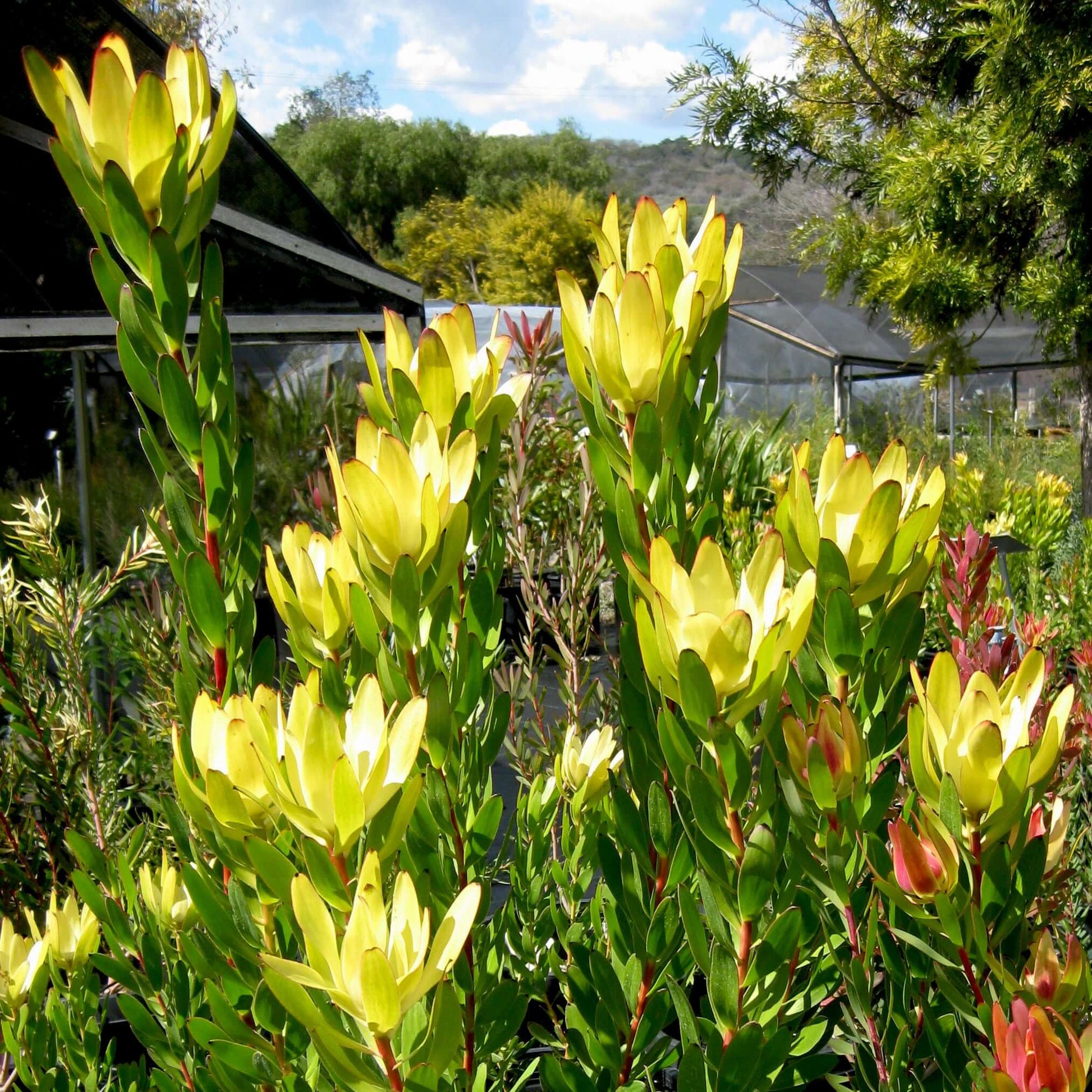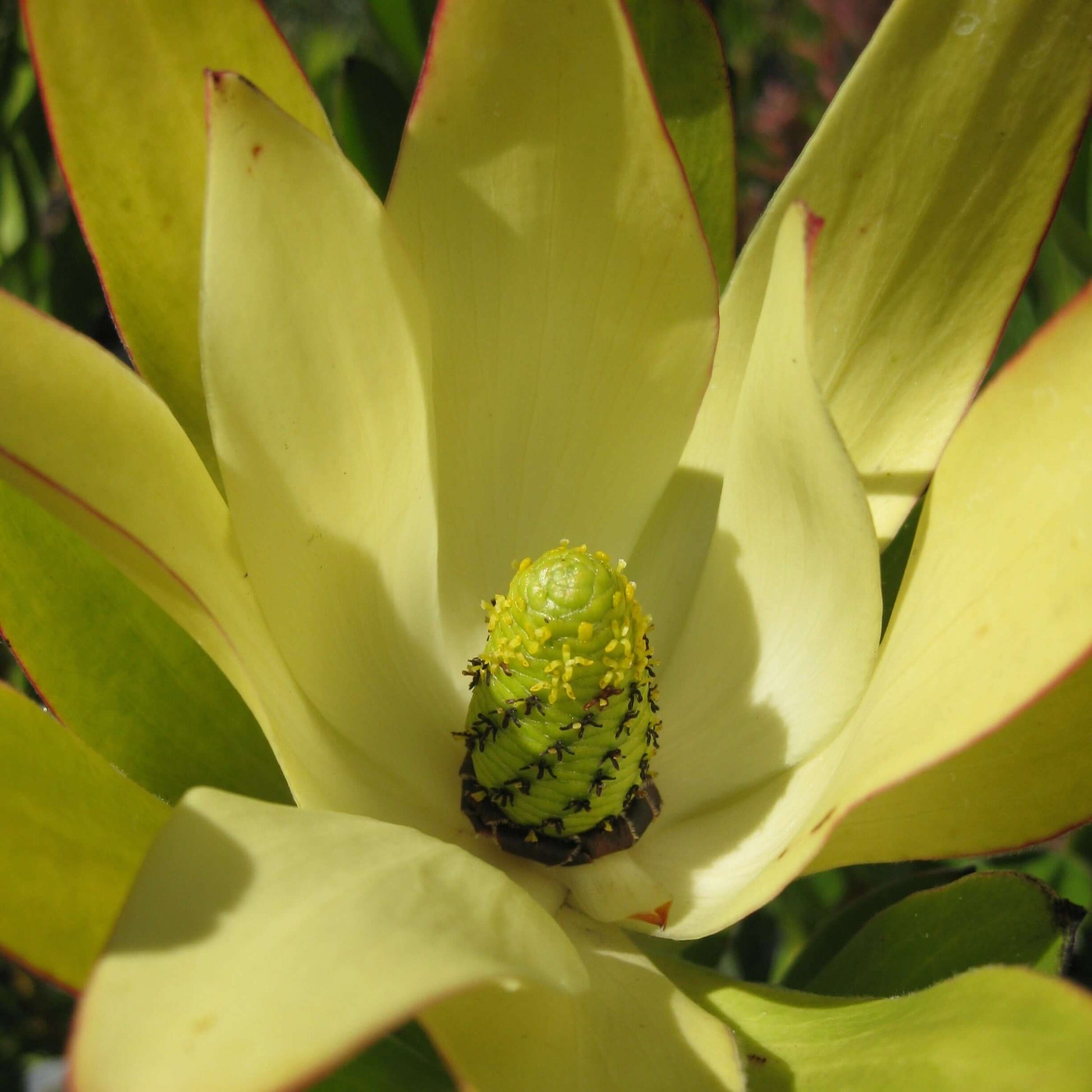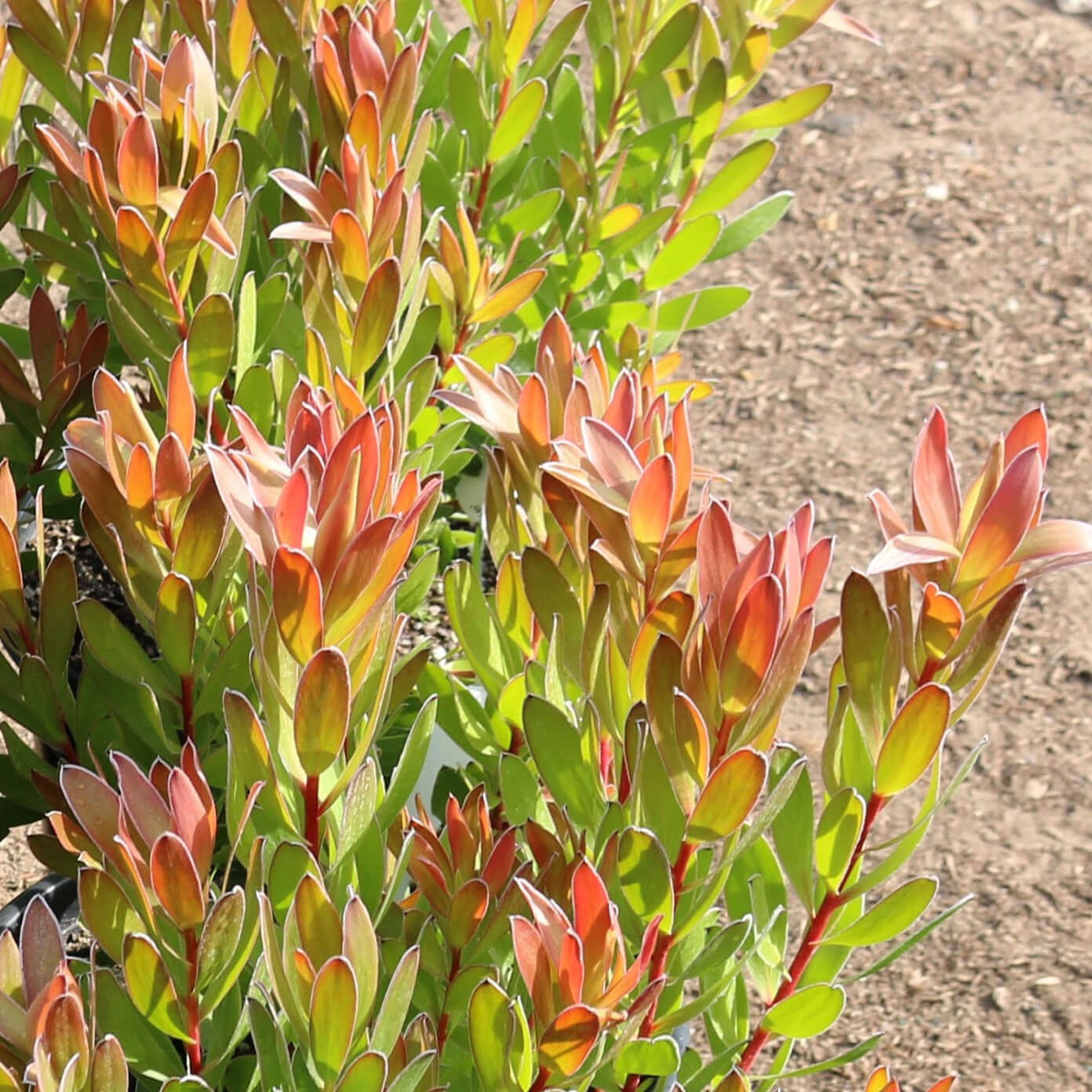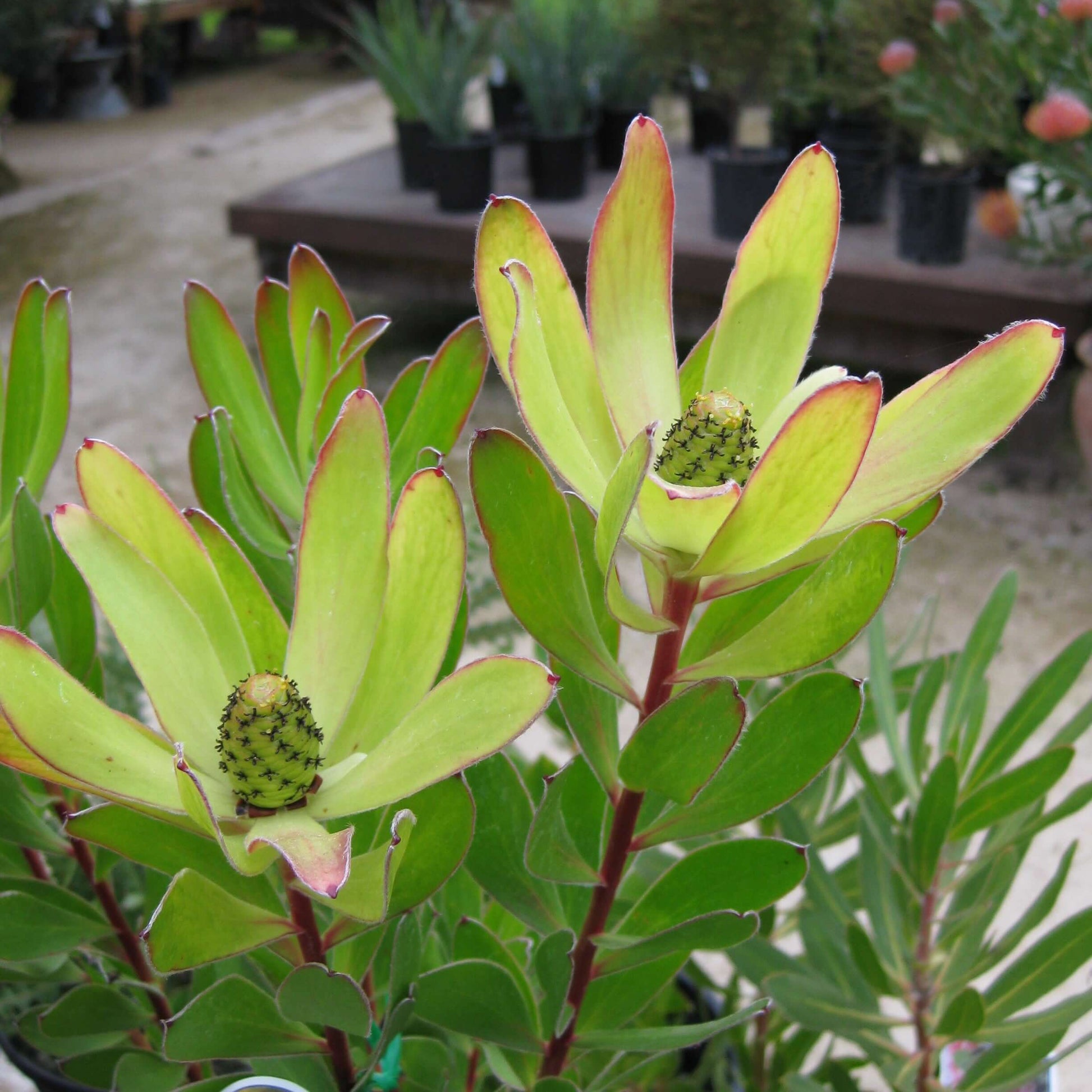
Leucadendron Safari Goldstrike
Safari Goldstrike Yellow Conebush
Delivery
24-hour money-back guarantee
Free delivery on orders over $349
Big Project? Call 888-444-1126 for bulk rates!
Native to South Africa, Leucadendrons are prized for their foliage and/or flowers. Colorful showy bracts surround the cone-like flower clusters which together look like a large daisy. 'Safari Goldstrike' is a large erect evergreen shrub with bright yellow bracts in winter. Beautiful red stems stand out against the dark green leaves that flush orange-red on juvenile foliage. Safari Goldstrike Yellow Conebush (Leucadendron 'Safari Goldstrike') is an easy-care and waterwise option. Use in fresh or dried flower arrangements. Great in landscapes or containers.
How large does it grow and what is its habit?
What light and site conditions does it prefer?
What about watering, soil, and general care requirements?
What are its uses or special attributes?
3-6 ft.
5-6 ft.
Low
Pollinators, Bees
Perfect Your Landscape With Expert Help
Customize your yard with confidence. Schedule your free consultation today and bring your outdoor space to life!



